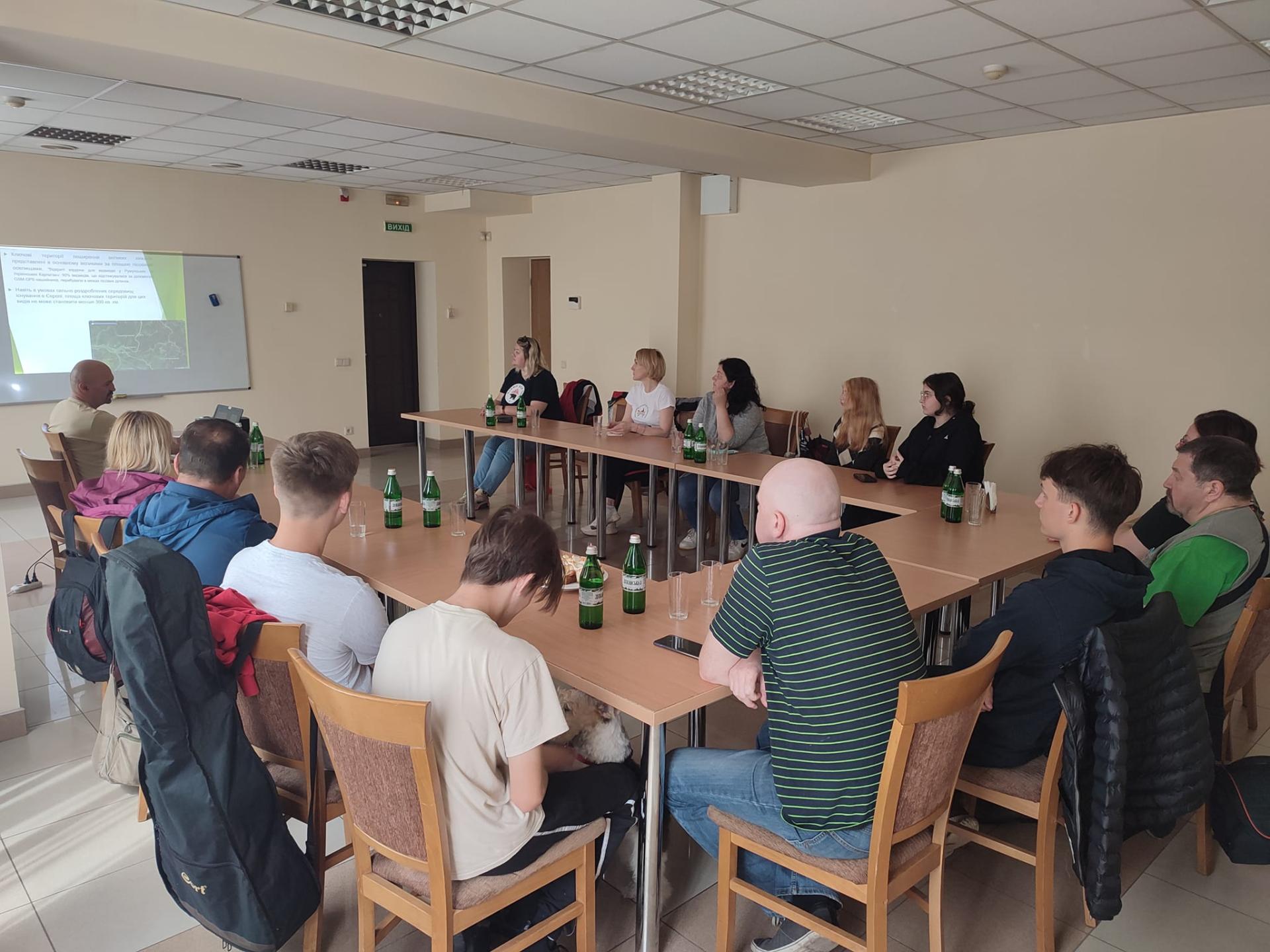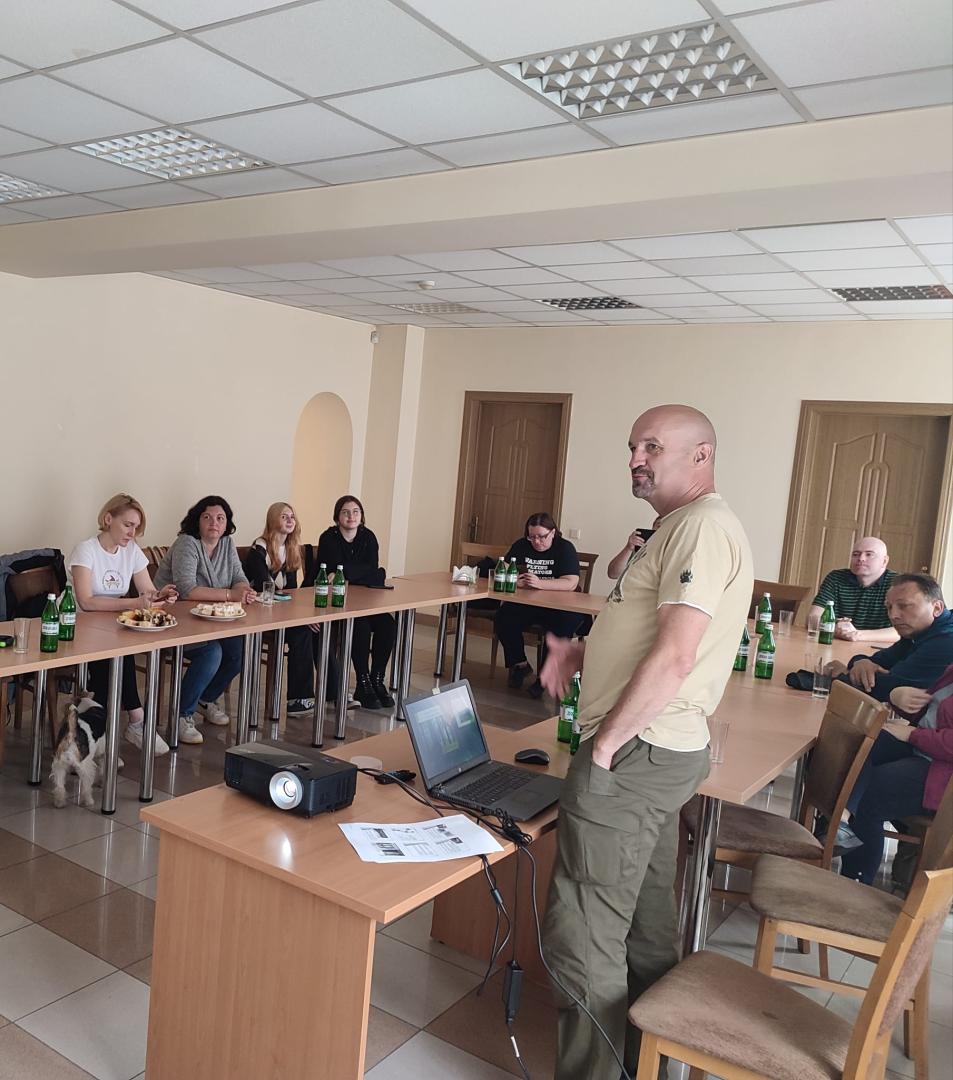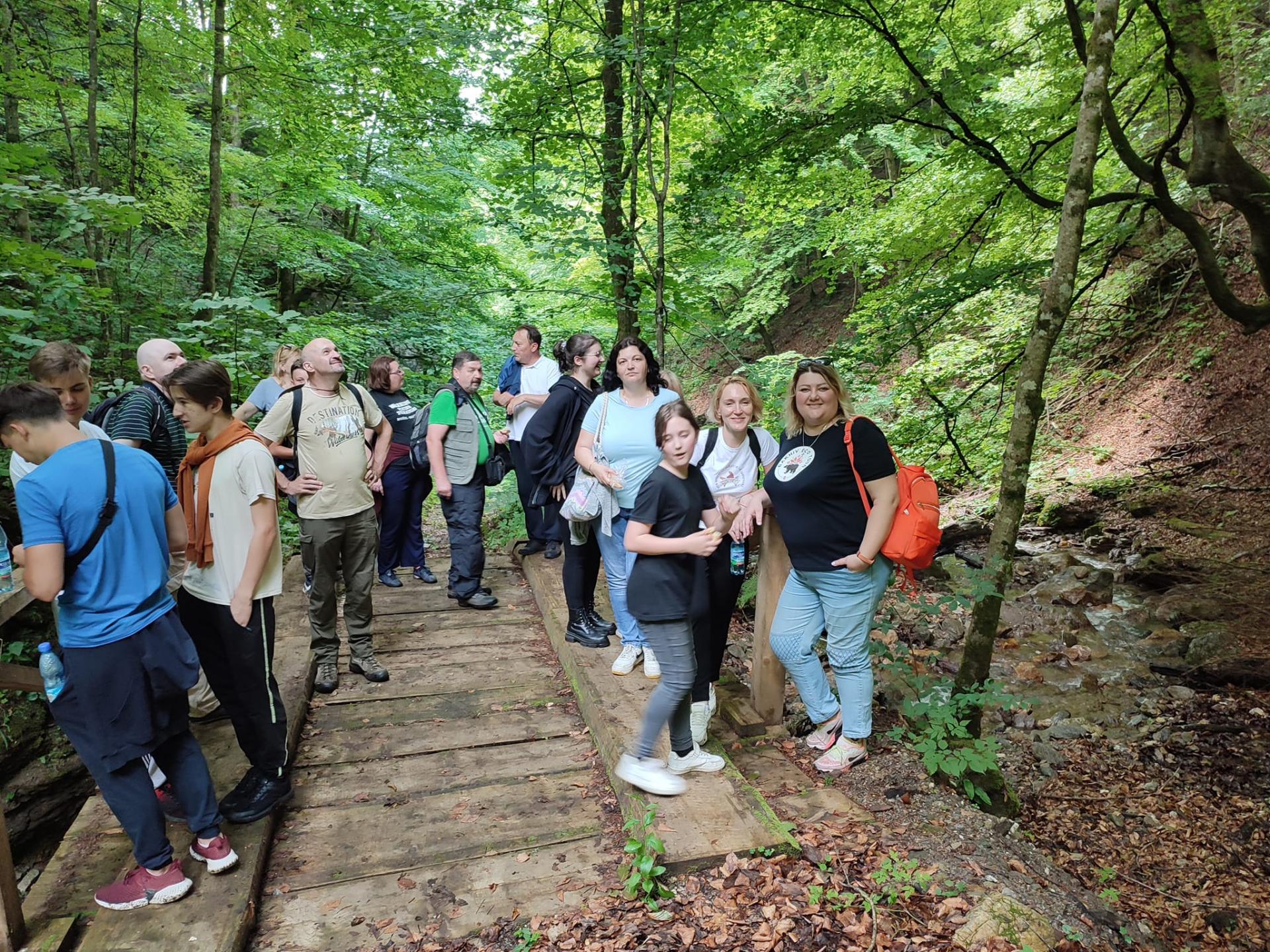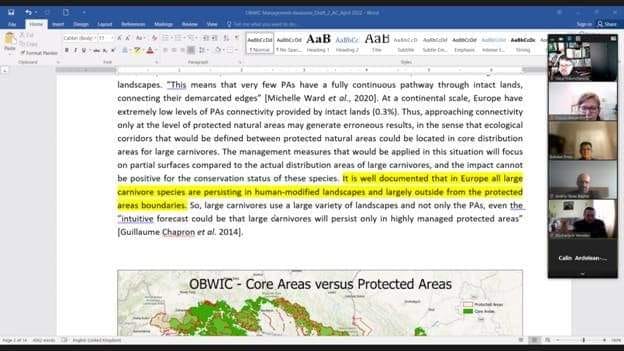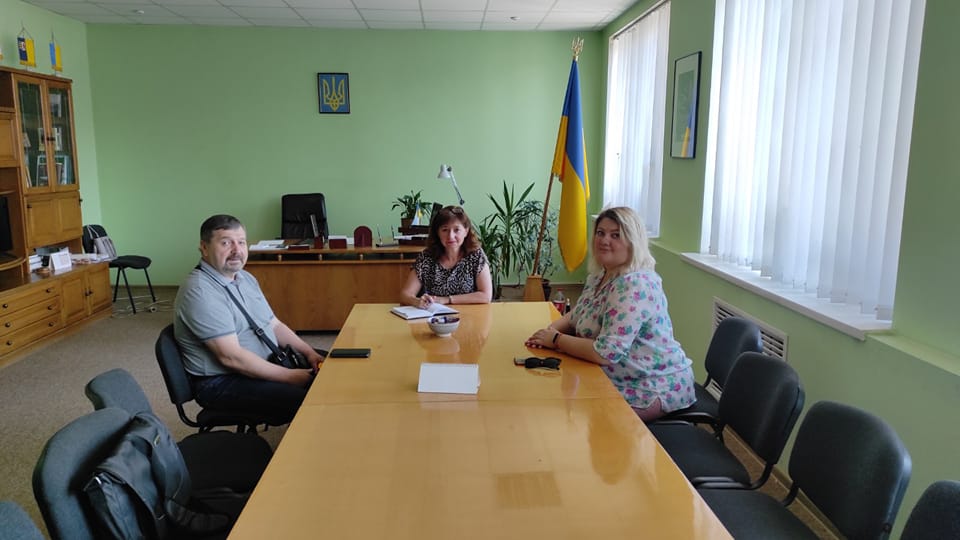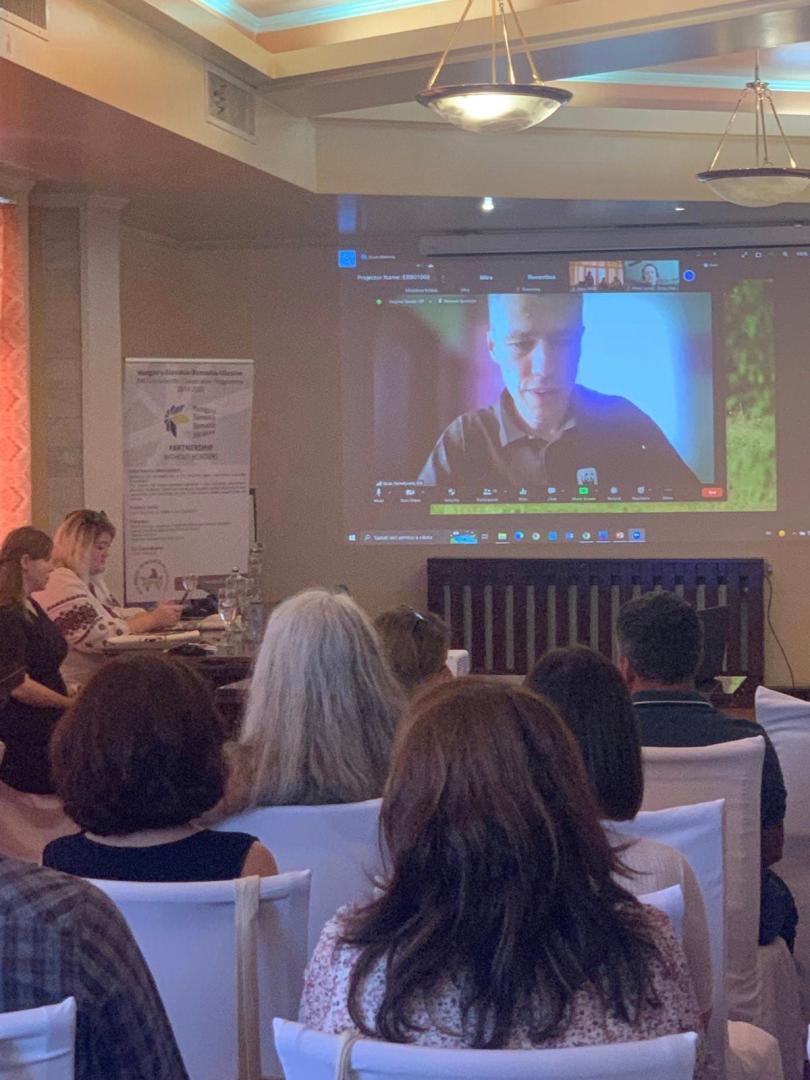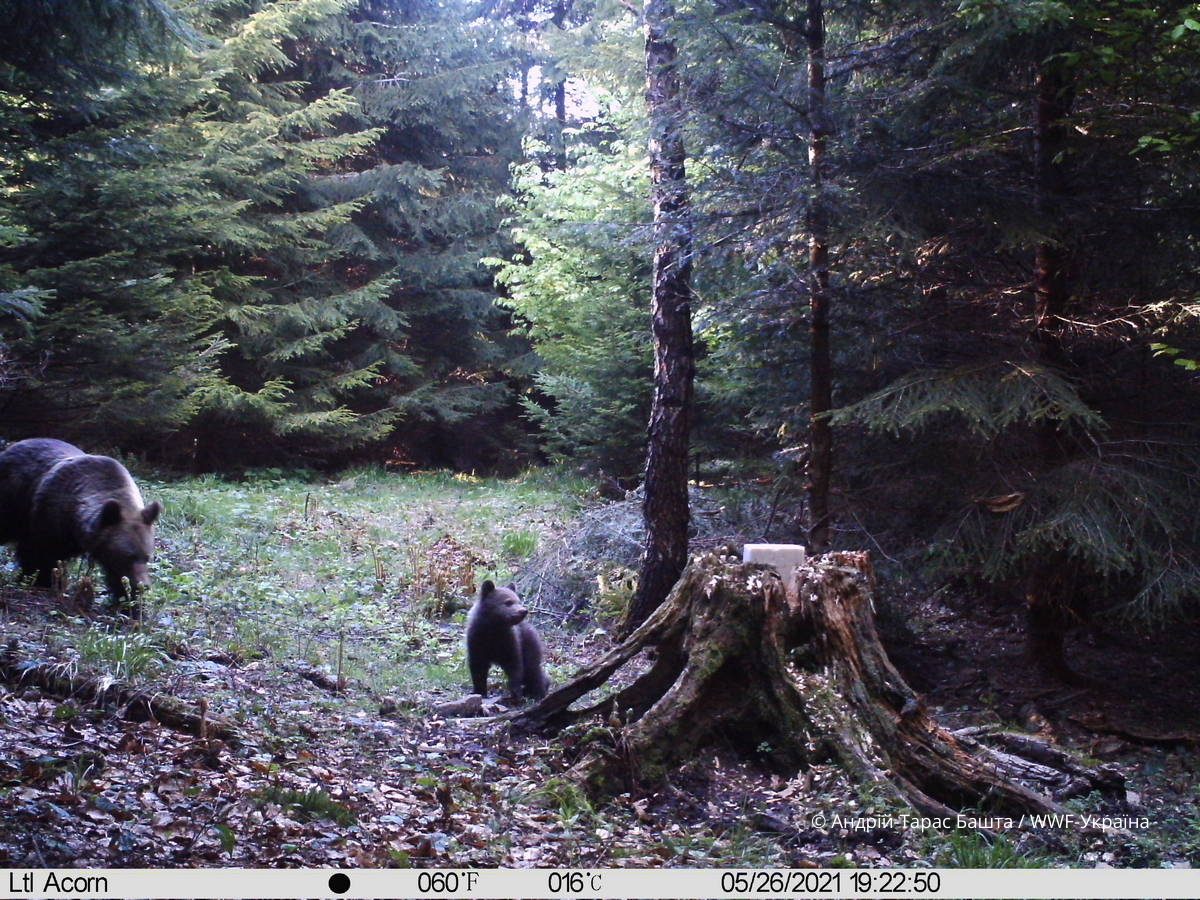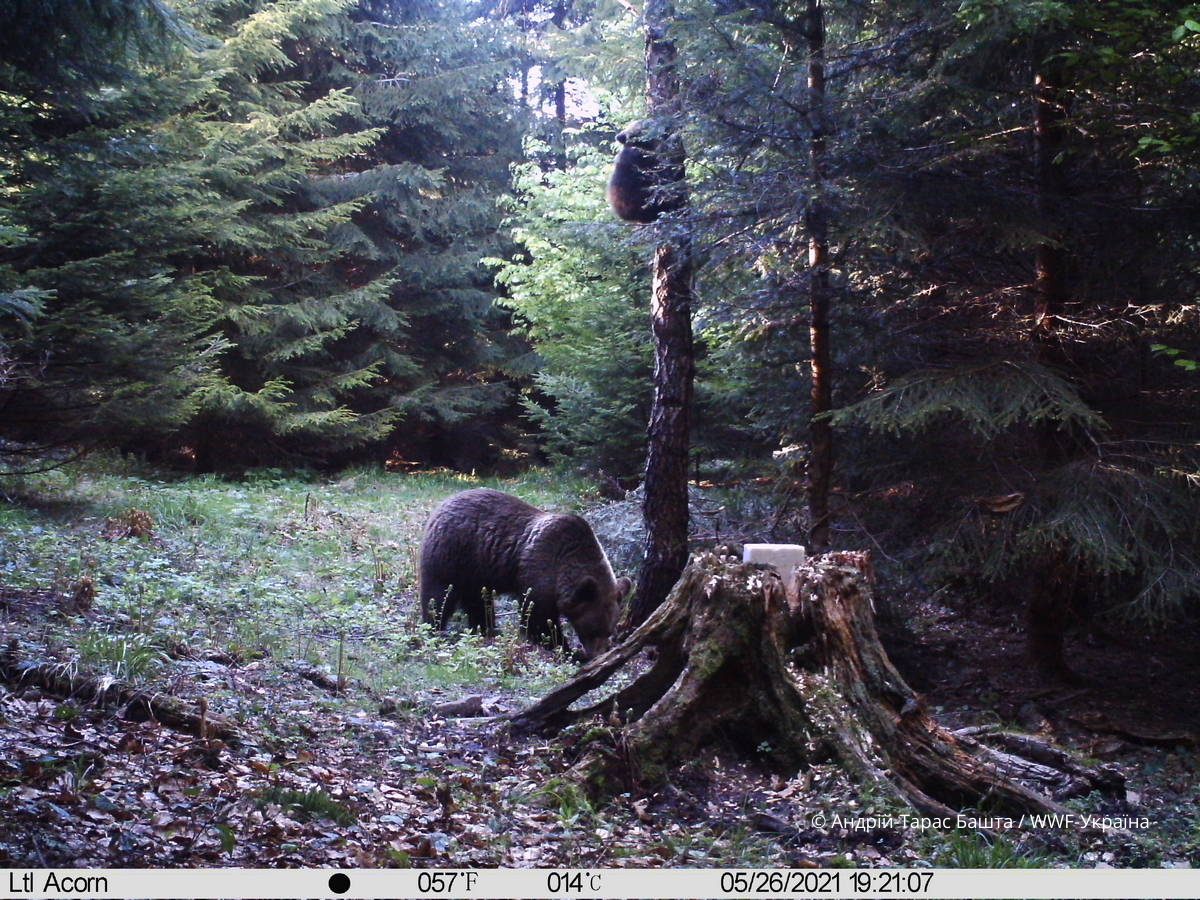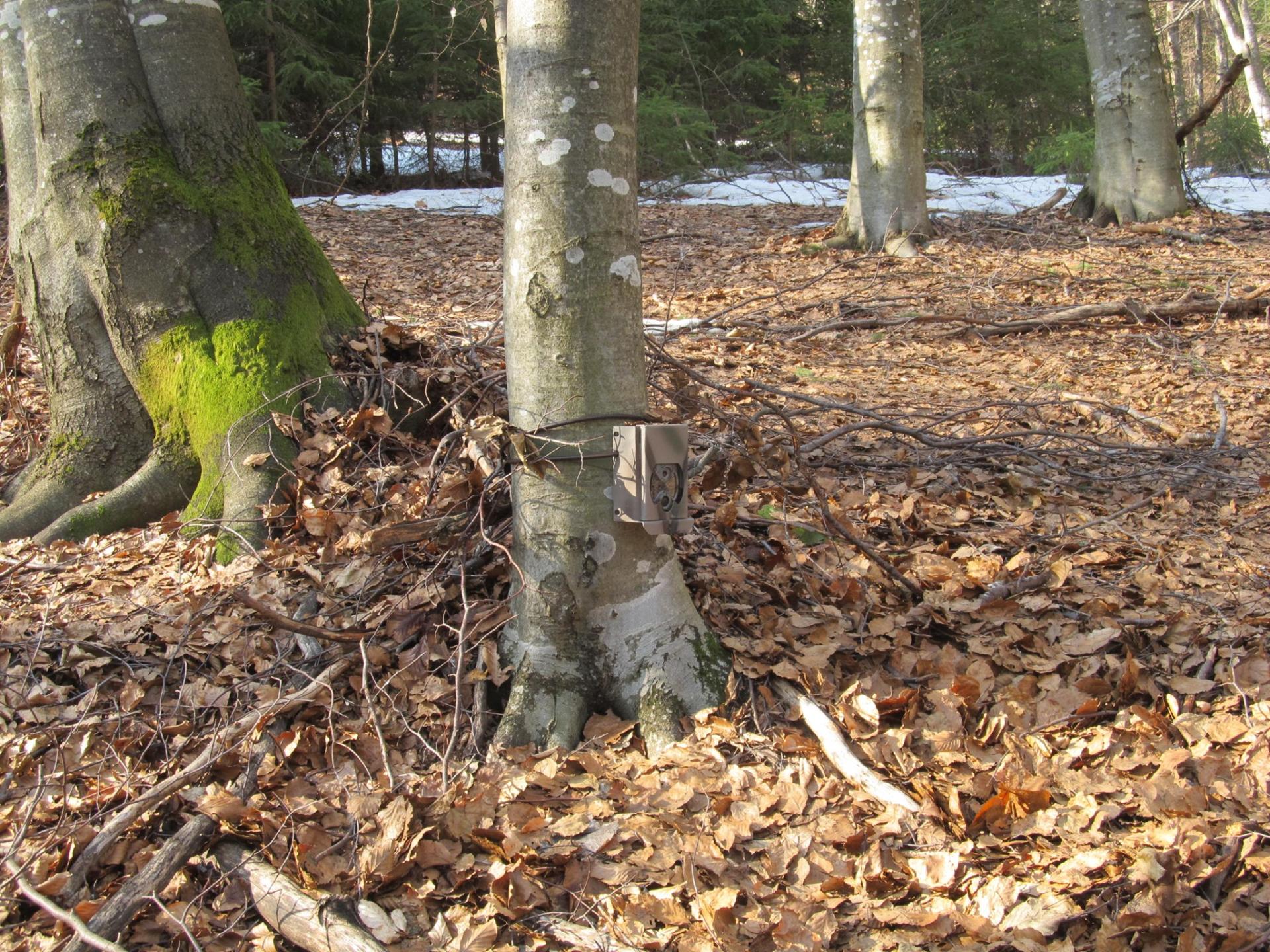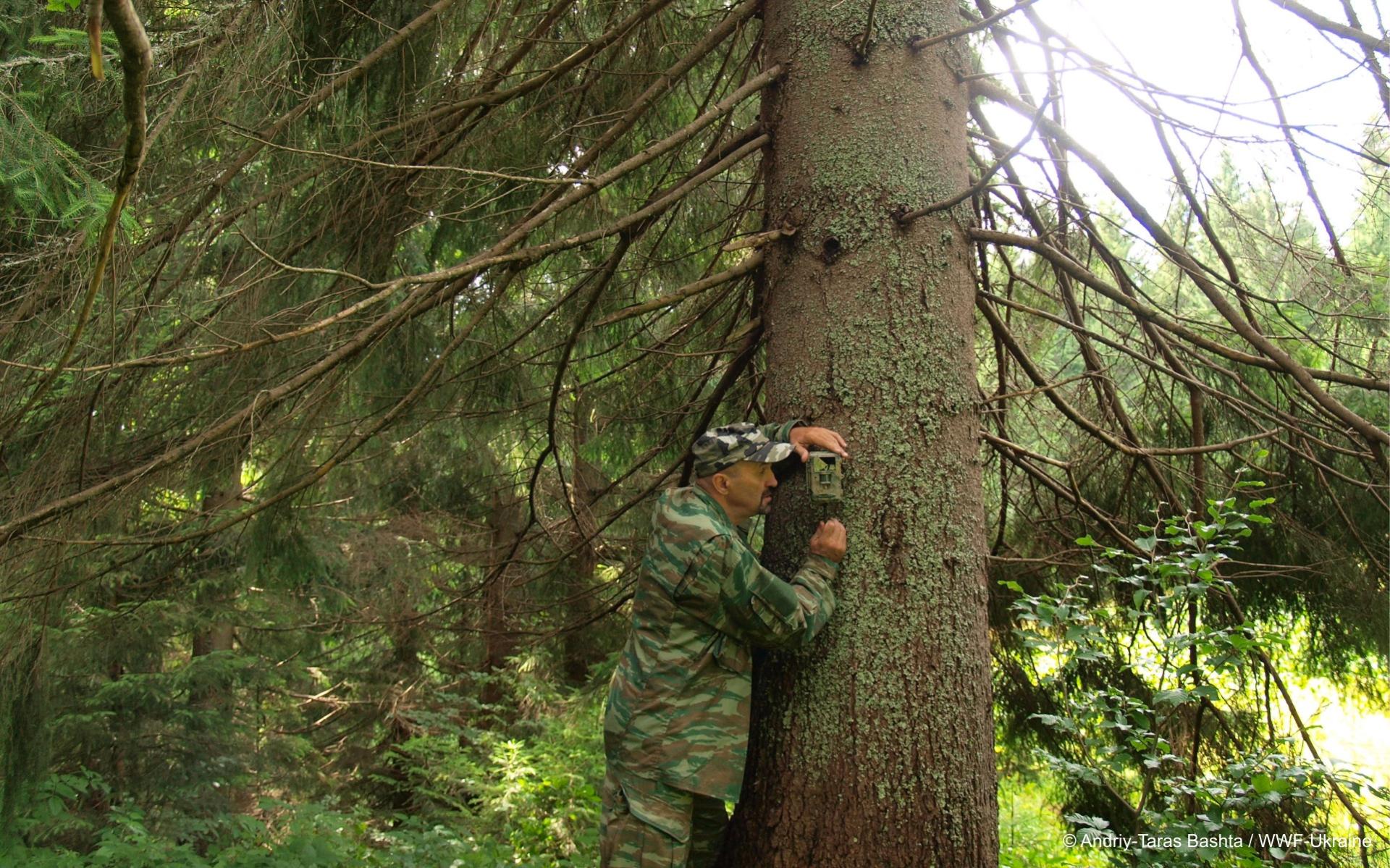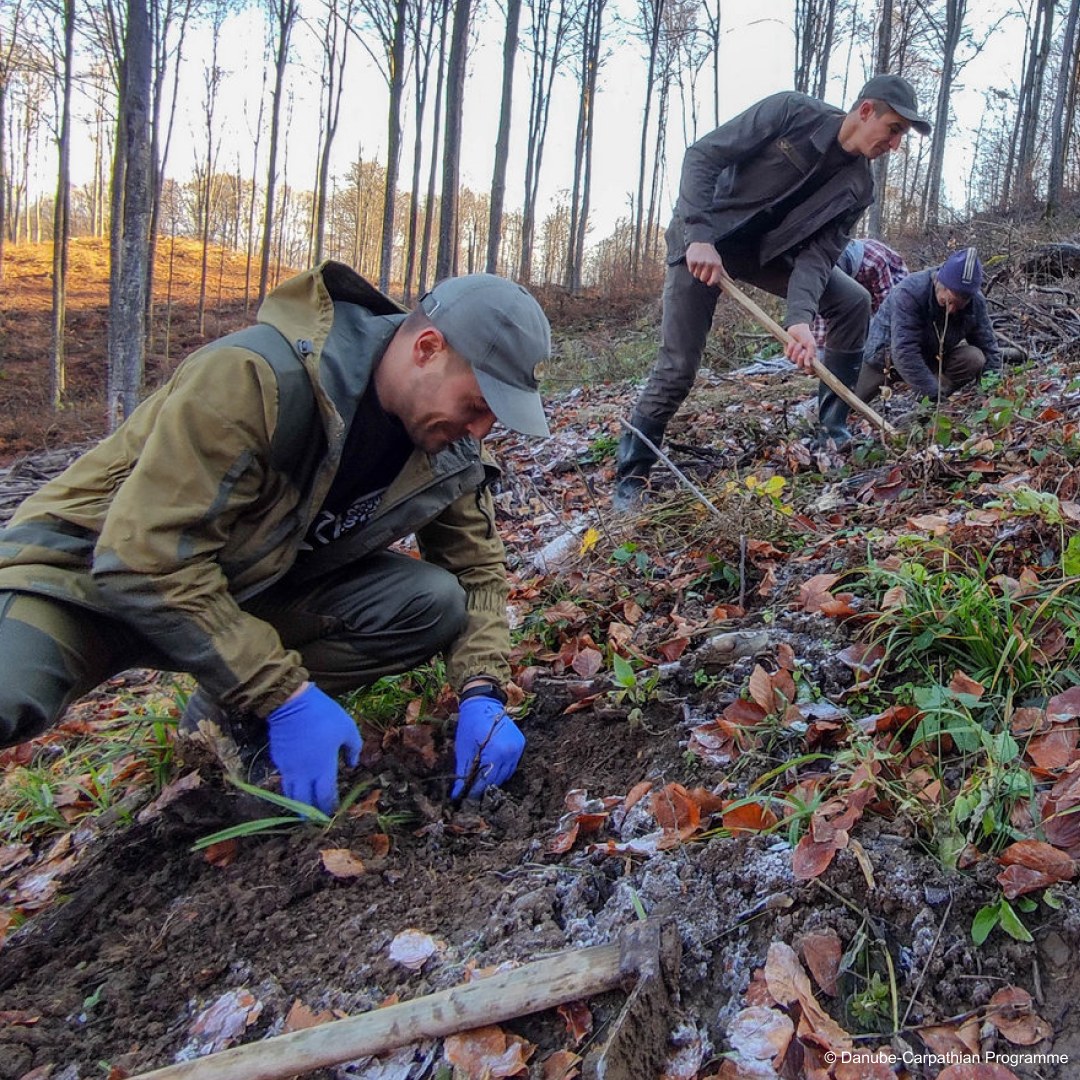Open Borders for Wildlife
Basic information
Project Title
Open Borders for Wildlife
Full project title
Open Borders for Wildlife in the Carpathians
Category
Reconnecting with nature
Project Description
Open Borders for Wildlife in the Carpathians contributed to effective protection of biodiversity in the Carpathian Ecoregion by maintaining and improving ecological connectivity between habitats and maintaining ecosystem services as the cornerstone of sustainable development.
Project area is one of the most important global repositories of natural wealth.
The project targeted preservation of common natural values on a landscape level, demolishing the negative effects of borders on habitats.
Project area is one of the most important global repositories of natural wealth.
The project targeted preservation of common natural values on a landscape level, demolishing the negative effects of borders on habitats.
Geographical Scope
Cross-border/international
Project Region
CROSS-BORDER/INTERNATIONAL: Hungary, Romania, Ukraine, Slovakia
Urban or rural issues
It addresses urban-rural linkages
Physical or other transformations
It refers to other types of transformations (soft investment)
EU Programme or fund
Yes
Which funds
Other
Other Funds
The Hungary-Slovakia-Romania-Ukraine ENI CBC Programme 2014-2020
Description of the project
Summary
The project targets preservation of common natural values on a landscape level, demolishing the negative effects of borders on habitats by: identifying key ecological corridors of transboundary interest for large carnivores as umbrella
species, within 4 million ha by using jointly developed harmonized methodology; developing in a participatory
manner and implementing management measures to increase the favourability of ecological corridors; advocacy
actions for protection of corridors; awareness raising and education on biodiversity importance as a precondition for
sustainable development of local communities.
Project innovation relates to a first time partnership of 3 EU countries and Ukraine in a joint effort for ensuring connectivity beyond borders for wildlife through cooperation, field and policy work. Moreover, scientific monitoring equipment will bring in new data on wildlife distribution and development infrastructure.
The project contributed to making a stronger cross border cooperation region towards sustainable development by conservation of landscape and biodiversity in border area of Hungary-Slovakia-Romania-Ukraine through maintaining and improving ecological connectivity between habitats and by maintaining ecosystem services for the benefit of local communities, regions and society in general.
By enhancing cross border cooperation for sustainable use of resources in the Carpathians, the project responded to ENI programme goal: “strengthening prosperity and stability of regions in border area and avoiding emergence of dividing lines between the enlarged EU and its neighbours”
species, within 4 million ha by using jointly developed harmonized methodology; developing in a participatory
manner and implementing management measures to increase the favourability of ecological corridors; advocacy
actions for protection of corridors; awareness raising and education on biodiversity importance as a precondition for
sustainable development of local communities.
Project innovation relates to a first time partnership of 3 EU countries and Ukraine in a joint effort for ensuring connectivity beyond borders for wildlife through cooperation, field and policy work. Moreover, scientific monitoring equipment will bring in new data on wildlife distribution and development infrastructure.
The project contributed to making a stronger cross border cooperation region towards sustainable development by conservation of landscape and biodiversity in border area of Hungary-Slovakia-Romania-Ukraine through maintaining and improving ecological connectivity between habitats and by maintaining ecosystem services for the benefit of local communities, regions and society in general.
By enhancing cross border cooperation for sustainable use of resources in the Carpathians, the project responded to ENI programme goal: “strengthening prosperity and stability of regions in border area and avoiding emergence of dividing lines between the enlarged EU and its neighbours”
Key objectives for sustainability
Project targeted habitat fragmentation and degradation which affects region’s exceptional natural heritage of the
Carpathians. Via common approaches for ensuring nature connectivity and active cooperation between stakeholders the project contributed to successful preservation of common natural values, ecosystem services provision for benefit of local communities and increasing the awareness of people living in the area on the importance of biodiversity for their livelihoods. In a nutshell, the project serves as a good example in ensuring sustainability of the region and living in harmony with nature.
Another objective reached - increased capacity in environmental protection and climate change mitigation (Based on surveys (baseline, midterm, final) among key stakeholders e.g. water directorates. relevant NGOs institutions, authorities) and harmonized methodology for ecological corridors identification and protection was elaborated in a participatory manner.
SO1. By 2021, the key ecological corridors of transboundary interest in the ENI Carpathians are identified by using the
common harmonized methodology developed within the project.
SO2. By 2021 the functionality of at least 3 critical ecological corridors in the RO-UA transboundary area is improved
by implementing at least 5 management measures as recommended by the cross-border network of experts;
(ecological corridors versus critical ecological corridors; ecological corridors are represented by more or less
continuous areas of optimal and favourable habitats that facilitate the safe and efficient dispersal of the wildlife
between core-areas or protected areas; if regular ecological corridors show an optimal to ideal state of connectivity
between natural habitats for wildlife in the studied area the critical ecological corridors are characterized by a
minimum and fragile state of connectivity between the natural habitats for wildlife, but which is crucial for wildlife
movement at the landscape level)
Carpathians. Via common approaches for ensuring nature connectivity and active cooperation between stakeholders the project contributed to successful preservation of common natural values, ecosystem services provision for benefit of local communities and increasing the awareness of people living in the area on the importance of biodiversity for their livelihoods. In a nutshell, the project serves as a good example in ensuring sustainability of the region and living in harmony with nature.
Another objective reached - increased capacity in environmental protection and climate change mitigation (Based on surveys (baseline, midterm, final) among key stakeholders e.g. water directorates. relevant NGOs institutions, authorities) and harmonized methodology for ecological corridors identification and protection was elaborated in a participatory manner.
SO1. By 2021, the key ecological corridors of transboundary interest in the ENI Carpathians are identified by using the
common harmonized methodology developed within the project.
SO2. By 2021 the functionality of at least 3 critical ecological corridors in the RO-UA transboundary area is improved
by implementing at least 5 management measures as recommended by the cross-border network of experts;
(ecological corridors versus critical ecological corridors; ecological corridors are represented by more or less
continuous areas of optimal and favourable habitats that facilitate the safe and efficient dispersal of the wildlife
between core-areas or protected areas; if regular ecological corridors show an optimal to ideal state of connectivity
between natural habitats for wildlife in the studied area the critical ecological corridors are characterized by a
minimum and fragile state of connectivity between the natural habitats for wildlife, but which is crucial for wildlife
movement at the landscape level)
Key objectives for aesthetics and quality
Project stakeholders (at least 335) cooperating and 10 protocols on cooperation signed for the development and
application of the methodology and management of ecological corridors;
300 000 ha of habitats connected by implementation of management measures;
At least 320 relevant stakeholders participating in lobby and policy actions in relation to promotion and protection of ecological corridors;
Min. 1000 persons directly and 500000 indirectly participating in environmental actions, capacity building and
awareness raising activities.
Increased cooperation between stakeholders;
Increased knowledge to ensure protection of ecological corridors (min 450 stakeholders);
Increased conservation capacity for stakeholders to ensure protection of ecological corridors;
Increased awareness of public for protection of ecological corridors (min 500,0000 pers)
SO3. By 2021, the key ecological corridors of transboundary interest in the ENI Carpathians benefit of increased
protection as a result of advocacy actions.
SO4. By 2021, the level of information, education and awareness on the importance of safeguarding the ecological corridors for large carnivores in the Carpathian Mountains is increased.
application of the methodology and management of ecological corridors;
300 000 ha of habitats connected by implementation of management measures;
At least 320 relevant stakeholders participating in lobby and policy actions in relation to promotion and protection of ecological corridors;
Min. 1000 persons directly and 500000 indirectly participating in environmental actions, capacity building and
awareness raising activities.
Increased cooperation between stakeholders;
Increased knowledge to ensure protection of ecological corridors (min 450 stakeholders);
Increased conservation capacity for stakeholders to ensure protection of ecological corridors;
Increased awareness of public for protection of ecological corridors (min 500,0000 pers)
SO3. By 2021, the key ecological corridors of transboundary interest in the ENI Carpathians benefit of increased
protection as a result of advocacy actions.
SO4. By 2021, the level of information, education and awareness on the importance of safeguarding the ecological corridors for large carnivores in the Carpathian Mountains is increased.
Key objectives for inclusion
Project results were disseminated to authorities, NGO’s, administrators, custodians of protected areas (PA), young generation
and public via designated communication channels: project and project applicants’ websites, social media posts, printed materials,
online and offline mass media (sites, radio, TV). The messages transport project achievements as well as topics related to large carnivore species, in order to raise awareness at a general level.
WWF RO's wildlife manager participated and promoted the project in major European connectivity events, also due to WWF RO
strategic objectives on connectivity. Synergies will be created with other existing (e.g TransGreen, EuroLargeCarnivores) and future
initiatives (e.g. ConnectGreen, Wild4DC) and project results will be used for the future strategy of ecological connectivity in the
Carpathian Ecoregion that will be developed within the frame of the Carpathian Convention. Project will be used as a model and
best practice for transboundary cooperation on maintaining and improving ecological connectivity in mountain areas in Europe.
OBWIC will take advantage of EU events (e.g EU Platform on co-existence Humans and Large Carnivores) to promote project's
results. Furthermore, Biodiversity WG of the Carpathian Convention will be informed about project results; the GIS database was transferred to CCIBIS of the Carpathian Convention which will create basis for further replication and extension of the initiative
in the Carpathians.
and public via designated communication channels: project and project applicants’ websites, social media posts, printed materials,
online and offline mass media (sites, radio, TV). The messages transport project achievements as well as topics related to large carnivore species, in order to raise awareness at a general level.
WWF RO's wildlife manager participated and promoted the project in major European connectivity events, also due to WWF RO
strategic objectives on connectivity. Synergies will be created with other existing (e.g TransGreen, EuroLargeCarnivores) and future
initiatives (e.g. ConnectGreen, Wild4DC) and project results will be used for the future strategy of ecological connectivity in the
Carpathian Ecoregion that will be developed within the frame of the Carpathian Convention. Project will be used as a model and
best practice for transboundary cooperation on maintaining and improving ecological connectivity in mountain areas in Europe.
OBWIC will take advantage of EU events (e.g EU Platform on co-existence Humans and Large Carnivores) to promote project's
results. Furthermore, Biodiversity WG of the Carpathian Convention will be informed about project results; the GIS database was transferred to CCIBIS of the Carpathian Convention which will create basis for further replication and extension of the initiative
in the Carpathians.
Results in relation to category
- Willingness of administrators /owners to accept the detailed technical solutions;
- Relevant documents are taken into consideration by authorities;
- Public opinion on protection of large carnivoes populations is improved;
- Data base availability including maps, reports, documents;
- GIS database is built in due time to serve activities that require GIS input;
- enough information gathered in the previous activities related to methodology completion.
- critical habitats identified, including ecological corridors;
- the owners/administrators have given agreement for the specific ecological corridors management measures implementation;
- Increased capacity in environmental protection and climate change mitigation (Based on surveys (baseline, mid-term, final) among key stakeholders e.g. water directorates. relevant NGOs, institutions, authorities)
- Harmonized methodology for transboundary ecological corridors identification and management and action plan developed via active cooperation ready to be used and replicated
- Key ecological corridors of transboundary interest identified within 4000000 ha
- Participatory conservation measures for large carnivores and sustainable development of communities elaborated
- Functionality for corridors improved ensuring connectivity for more than 300.000 ha habitats
- Relevant documents are taken into consideration by authorities;
- Public opinion on protection of large carnivoes populations is improved;
- Data base availability including maps, reports, documents;
- GIS database is built in due time to serve activities that require GIS input;
- enough information gathered in the previous activities related to methodology completion.
- critical habitats identified, including ecological corridors;
- the owners/administrators have given agreement for the specific ecological corridors management measures implementation;
- Increased capacity in environmental protection and climate change mitigation (Based on surveys (baseline, mid-term, final) among key stakeholders e.g. water directorates. relevant NGOs, institutions, authorities)
- Harmonized methodology for transboundary ecological corridors identification and management and action plan developed via active cooperation ready to be used and replicated
- Key ecological corridors of transboundary interest identified within 4000000 ha
- Participatory conservation measures for large carnivores and sustainable development of communities elaborated
- Functionality for corridors improved ensuring connectivity for more than 300.000 ha habitats
How Citizens benefit
OBWIC project is implemented using a participatory approach - project documents are constantly discussed with
relevant stakeholders (SH) in order to reach transparency of the project content and inclusion of innovative
ideas related to identification and protection of ecological corridors of transboundary interest. Furthermore, this
approach will make the inclusion of multiple layers and interests of the relevant topic (identification and
protection of ecological corridors) possible, ensuring a high quality result and higher acceptance from SH. Multi
SH engagement has been embedded in all project AGs. Up to this moment in AG 1 the methodology for
identification of ecological corridors was developed, consulted and agreed with experts as well as other relevant
SH in national meetings and via electronic web platform www.openbordersforbears.com. Transboundary experts
also analyzed and provided suggestions for improvement of the methodology, ensuring the harmonized
approach across countries. Within the other project activities, the project team is also seeking high transparency
and engagement from relevant stakeholders for the project ideas. Memoranda of understanding were agreed
(some signed) with relevant SH in RO and UA – for implementation of restoration activities in AG 2.2 and also
for implementation of the educational programme in AG 6.3. In this moment, at project level there is an active
cooperation platform which includes authorities, decision makers, administrators of protected areas,
environmental NGOs, research institutes, large carnivore experts. All of them are constantly being informed and
engaged in project activities and intermediate results. Beneficiaries have cultivated, so far, good working
relationships with relevant SH (at national and local level), being co-engaged in improvement of management for
ecological corridors and wildlife (working groups at national level, synergies with existing
initiatives for biodiversity protection).
relevant stakeholders (SH) in order to reach transparency of the project content and inclusion of innovative
ideas related to identification and protection of ecological corridors of transboundary interest. Furthermore, this
approach will make the inclusion of multiple layers and interests of the relevant topic (identification and
protection of ecological corridors) possible, ensuring a high quality result and higher acceptance from SH. Multi
SH engagement has been embedded in all project AGs. Up to this moment in AG 1 the methodology for
identification of ecological corridors was developed, consulted and agreed with experts as well as other relevant
SH in national meetings and via electronic web platform www.openbordersforbears.com. Transboundary experts
also analyzed and provided suggestions for improvement of the methodology, ensuring the harmonized
approach across countries. Within the other project activities, the project team is also seeking high transparency
and engagement from relevant stakeholders for the project ideas. Memoranda of understanding were agreed
(some signed) with relevant SH in RO and UA – for implementation of restoration activities in AG 2.2 and also
for implementation of the educational programme in AG 6.3. In this moment, at project level there is an active
cooperation platform which includes authorities, decision makers, administrators of protected areas,
environmental NGOs, research institutes, large carnivore experts. All of them are constantly being informed and
engaged in project activities and intermediate results. Beneficiaries have cultivated, so far, good working
relationships with relevant SH (at national and local level), being co-engaged in improvement of management for
ecological corridors and wildlife (working groups at national level, synergies with existing
initiatives for biodiversity protection).
Physical or other transformations
It refers to other types of transformations (soft investment)
Innovative character
The Carpathian region as a biodiversity hot spot faces major challenges related to chaotic development, with many species and
habitats threatened by habitat fragmentation caused by unsustainable infrastructure planning. Individual countries have usually
their own policies and approaches in terms of biodiversity conservation, without any transboundary harmonisation of the efforts.
This fact makes the protection and conservation of biodiversity of certain transboundary areas, in many cases, difficult. The negative
effects of fragmentation and creation of barriers to wildlife corridors require a coherent cross border answer due to the fact that
large carnivores (LC) frequently move across state borders in search of food and mates. Transboundary cooperation is an essential
precondition for preservation of these large and complex ecosystems in the region. Sustained individual efforts in each target
project area from Romania, Ukraine, Slovakia and Hungary, including data research, combined with joint and harmonized lobby and
policy actions for biodiversity conservation, are the basis for the preservation of transboundary area targeted by this project.
Furthermore, via active cooperation the project will improve connectivity along 4 countries and will support integrated habitat
management for three large carnivore species (bear - Ursus Arctos, wolf - Canis Lupus and Euroasian lynx - Lynx Lynx).
habitats threatened by habitat fragmentation caused by unsustainable infrastructure planning. Individual countries have usually
their own policies and approaches in terms of biodiversity conservation, without any transboundary harmonisation of the efforts.
This fact makes the protection and conservation of biodiversity of certain transboundary areas, in many cases, difficult. The negative
effects of fragmentation and creation of barriers to wildlife corridors require a coherent cross border answer due to the fact that
large carnivores (LC) frequently move across state borders in search of food and mates. Transboundary cooperation is an essential
precondition for preservation of these large and complex ecosystems in the region. Sustained individual efforts in each target
project area from Romania, Ukraine, Slovakia and Hungary, including data research, combined with joint and harmonized lobby and
policy actions for biodiversity conservation, are the basis for the preservation of transboundary area targeted by this project.
Furthermore, via active cooperation the project will improve connectivity along 4 countries and will support integrated habitat
management for three large carnivore species (bear - Ursus Arctos, wolf - Canis Lupus and Euroasian lynx - Lynx Lynx).
Disciplines/knowledge reflected
WWF MM RO, part of WWF Romania started activities in Maramures in 2003 targeting sustainable use of natural
resources, identification and management of ecological corridors, wildlife monitoring, community development,
lobby, advocacy for adequate environmental legislation. WWF RO has wide experience in implementation of
biodiversity conservation projects (INTERREG, DTP, LIFE, SOP, CBC ENPI 2007-2014).
RET UA works on nature protection, scientific research, tourism, ecological education, sustainable development of
the Zakarpattia oblast. RET has wide experience in cooperating with nature parks administrators in border
region, local schools, Junior Ranger Club in Rakhiv and State Forestry Enterprises from region.
SOS SK works on biodiversity protection, practical nature conservation activities, research and environmental
education cooperating with all relevant stakeholders in Slovakia. It has wide experience in implementing projects
related to practical nature conservation activities.
ANPD, HU aims at ensuring professional management of this protected area with duties such as conduction of
research activities, education, nature conservation and protection. Located in border area, international
cooperation is essential to its effective work, therefore ANPD has implemented numerous cross-border projects
and has extensive experience with bilateral and multilateral cooperation.
The consortium members have good knowledge of local, regional and national conditions and relevant
stakeholders, thus allowing for successful achievement of project objectives. Furthermore, the consortium has
capacity and resources to fully maximize use of project knowledge and policy uptake for successful protection of nature in transboundary areas.
resources, identification and management of ecological corridors, wildlife monitoring, community development,
lobby, advocacy for adequate environmental legislation. WWF RO has wide experience in implementation of
biodiversity conservation projects (INTERREG, DTP, LIFE, SOP, CBC ENPI 2007-2014).
RET UA works on nature protection, scientific research, tourism, ecological education, sustainable development of
the Zakarpattia oblast. RET has wide experience in cooperating with nature parks administrators in border
region, local schools, Junior Ranger Club in Rakhiv and State Forestry Enterprises from region.
SOS SK works on biodiversity protection, practical nature conservation activities, research and environmental
education cooperating with all relevant stakeholders in Slovakia. It has wide experience in implementing projects
related to practical nature conservation activities.
ANPD, HU aims at ensuring professional management of this protected area with duties such as conduction of
research activities, education, nature conservation and protection. Located in border area, international
cooperation is essential to its effective work, therefore ANPD has implemented numerous cross-border projects
and has extensive experience with bilateral and multilateral cooperation.
The consortium members have good knowledge of local, regional and national conditions and relevant
stakeholders, thus allowing for successful achievement of project objectives. Furthermore, the consortium has
capacity and resources to fully maximize use of project knowledge and policy uptake for successful protection of nature in transboundary areas.
Methodology used
Joint project development–the partnering organizations were working together during the project planning and
development phase, representatives from each partner travelled were actively involved in project proposal preparation as well as establishing and distributing roles among partners.
Joint project implementation – partners actively participated throughout project activities; they participated
in jointly developing a harmonized methodology for identification of ecological corridors, co-creation of
management measures as well as in joint communication and lobby and policy actions for protection of ecological
corridors of transboundary interest. There transboundary expert meetings were held for joint
discussion and agreement on project deliverables. Ecocorridor management measures were implemented
in already identified corridors of RO and UA.
Joint staffing - partners demonstrated good technical and managing capacities for project implementation: each
partner has 1 internal project manager and 1 financial manager; as for qualified technical experts RO has 3, HU 3
(UA and SK hired 1 technical expert each). In addition, RO has 1 comms, 1 educational expert; UA and SK will
hire 1 comms expert each; UA has one project officer while RO will hire 1 assistant. Staff allocation varies for each
partner and it is visible within project budget.
Stakeholders were actively participating in cooperation platform for developing of a harmonized methodology,
identification and monitoring of ecological corridors. Active stakeholders were participating in development and implementation of management measures. Management measures were implemented in RO and UA for ensuring protection of corridors and wildlife.
development phase, representatives from each partner travelled were actively involved in project proposal preparation as well as establishing and distributing roles among partners.
Joint project implementation – partners actively participated throughout project activities; they participated
in jointly developing a harmonized methodology for identification of ecological corridors, co-creation of
management measures as well as in joint communication and lobby and policy actions for protection of ecological
corridors of transboundary interest. There transboundary expert meetings were held for joint
discussion and agreement on project deliverables. Ecocorridor management measures were implemented
in already identified corridors of RO and UA.
Joint staffing - partners demonstrated good technical and managing capacities for project implementation: each
partner has 1 internal project manager and 1 financial manager; as for qualified technical experts RO has 3, HU 3
(UA and SK hired 1 technical expert each). In addition, RO has 1 comms, 1 educational expert; UA and SK will
hire 1 comms expert each; UA has one project officer while RO will hire 1 assistant. Staff allocation varies for each
partner and it is visible within project budget.
Stakeholders were actively participating in cooperation platform for developing of a harmonized methodology,
identification and monitoring of ecological corridors. Active stakeholders were participating in development and implementation of management measures. Management measures were implemented in RO and UA for ensuring protection of corridors and wildlife.
How stakeholders are engaged
increased cooperation among 335 SH/experts for identification and management of ecological corridors (1
expert network, 1 methodology, 1 network of ecological corridors, management measures); 300 000 ha
of habitats connected by implementation of management measures;
improved functionality for 3 critical ecological corridors;
increased capacity for nature protection for 50 institutions (320 SH);
increased awareness on importance of ecological corridors for 500.000 stakeholders.
335 SH cooperating and 10 protocols signed for the development and application of the methodology and
management of ecological corridors;
300 000 ha of habitats connected by implementation of management measures;
At least 320 relevant SH participating in lobby and policy actions in relation to promotion and protection of ecological corridors;
Min directly and 500000 indirectly participating in environmental actions, capacity building and awareness raising activities.
expert network, 1 methodology, 1 network of ecological corridors, management measures); 300 000 ha
of habitats connected by implementation of management measures;
improved functionality for 3 critical ecological corridors;
increased capacity for nature protection for 50 institutions (320 SH);
increased awareness on importance of ecological corridors for 500.000 stakeholders.
335 SH cooperating and 10 protocols signed for the development and application of the methodology and
management of ecological corridors;
300 000 ha of habitats connected by implementation of management measures;
At least 320 relevant SH participating in lobby and policy actions in relation to promotion and protection of ecological corridors;
Min directly and 500000 indirectly participating in environmental actions, capacity building and awareness raising activities.
Global challenges
Open Border for wildlife in the Carpathians contributes to effective protection of biodiversity in the Carpathian
Ecoregion by maintaining and improving ecological
connectivity between habitats and maintaining ecosystem
functions and services, the cornerstone of sustainable
development.
Focus project area, approximately 4 000 000 ha,- one of the most important global
repositories of natural wealth, recognized by the
Carpathian governments with the signing of the
Convention for the Protection and Sustainable
Development of the Carpathians.
Habitat loss, its fragmentation and degradation represent
the key threats to biodiversity, not only generally
worldwide, but also in the Carpathian region where the
pressure on natural resources is increasing and is doubled
by the plans to support economic growth.
The project targets preservation of common natural values
on a landscape level, demolishing the negative effects of
borders on habitats by: identifying key ecological corridors
of transboundary interest for large carnivores as umbrella
species, within 4 million ha by using jointly developed
harmonized methodology; developing in a participatory
manner and implementing management measures to
increase the favourability of ecological corridors; advocacy
actions for protection of corridors; awareness raising and
education on biodiversity importance as a precondition for
sustainable development of local communities
Project will benefit minimum 100 administrators,
custodians of protected areas (PA’s), state institutions,
environmental NGO’s and last but not least 1000 local
communities (4 mill. inhabitants) in ENI target area.
Project innovation relates to a first time partnership of 3
EU countries and Ukraine in a joint effort for ensuring
connectivity beyond borders for wildlife through
cooperation, field and policy work. Moreover, scientific
monitoring equipment brought in new data on wildlife
distribution and development infrastructure.
Ecoregion by maintaining and improving ecological
connectivity between habitats and maintaining ecosystem
functions and services, the cornerstone of sustainable
development.
Focus project area, approximately 4 000 000 ha,- one of the most important global
repositories of natural wealth, recognized by the
Carpathian governments with the signing of the
Convention for the Protection and Sustainable
Development of the Carpathians.
Habitat loss, its fragmentation and degradation represent
the key threats to biodiversity, not only generally
worldwide, but also in the Carpathian region where the
pressure on natural resources is increasing and is doubled
by the plans to support economic growth.
The project targets preservation of common natural values
on a landscape level, demolishing the negative effects of
borders on habitats by: identifying key ecological corridors
of transboundary interest for large carnivores as umbrella
species, within 4 million ha by using jointly developed
harmonized methodology; developing in a participatory
manner and implementing management measures to
increase the favourability of ecological corridors; advocacy
actions for protection of corridors; awareness raising and
education on biodiversity importance as a precondition for
sustainable development of local communities
Project will benefit minimum 100 administrators,
custodians of protected areas (PA’s), state institutions,
environmental NGO’s and last but not least 1000 local
communities (4 mill. inhabitants) in ENI target area.
Project innovation relates to a first time partnership of 3
EU countries and Ukraine in a joint effort for ensuring
connectivity beyond borders for wildlife through
cooperation, field and policy work. Moreover, scientific
monitoring equipment brought in new data on wildlife
distribution and development infrastructure.
Learning transferred to other parties
The following project outcomes can successfully be used by a wide range of nature conservationists, ecological NGOs, decision makers and other related stakeholders
- The harmonized methodology for identification of ecological corridors developed
- Identification and mapping of key ecological corridors by using the harmonized methodology.
- Monitoring of ecological corridors of transboundary interest and of human activities in the proximity of ecological corridors.
- Developed policy recommendations for protection of ecological corridors and large carnivores.
- Developed manual for teachers who use it for teaching natural sciences in a creative way and elaborate program for nature summer camps based on it
- The harmonized methodology for identification of ecological corridors developed
- Identification and mapping of key ecological corridors by using the harmonized methodology.
- Monitoring of ecological corridors of transboundary interest and of human activities in the proximity of ecological corridors.
- Developed policy recommendations for protection of ecological corridors and large carnivores.
- Developed manual for teachers who use it for teaching natural sciences in a creative way and elaborate program for nature summer camps based on it
Keywords
Connectivity
Ecological stability
Biodiversity
Large carnivores
Sustainability

